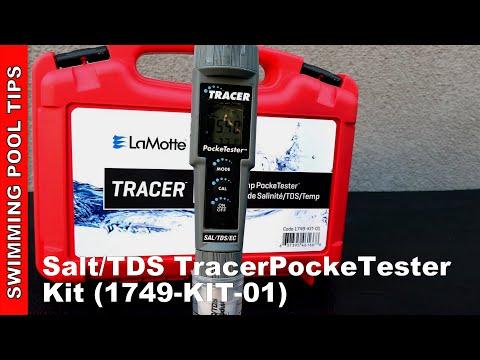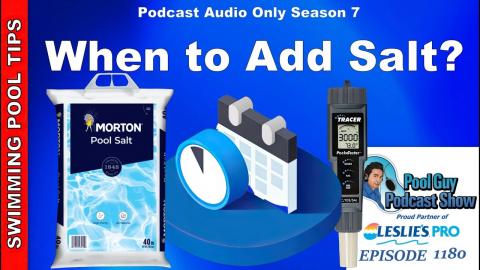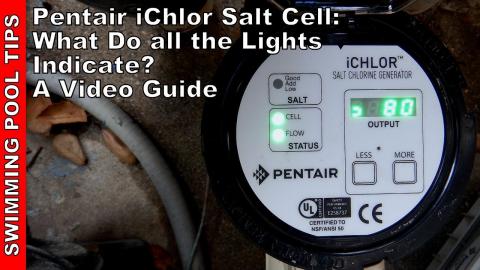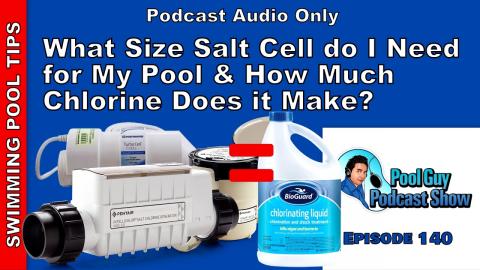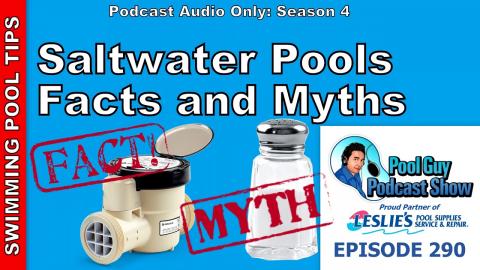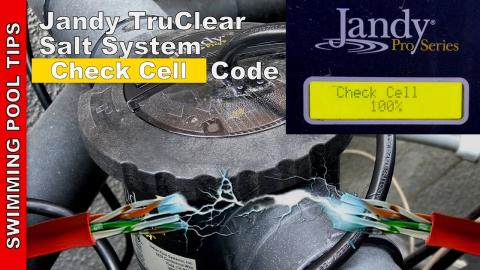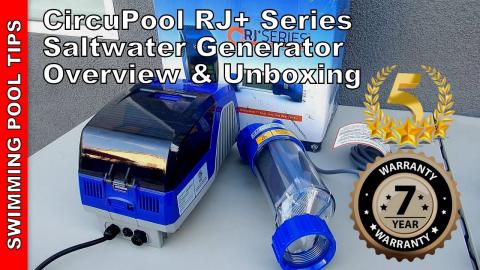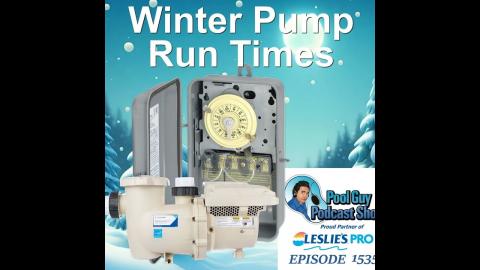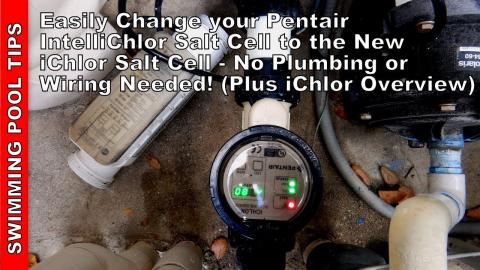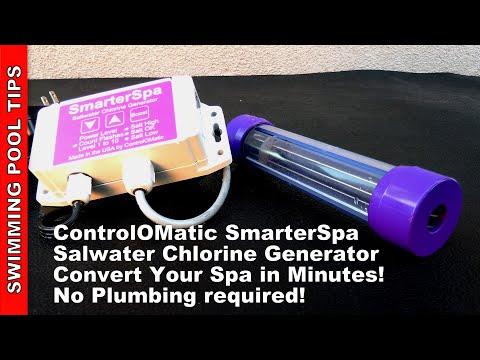Your Saltwater Pool and Salt Cell in the Winter Months
Description
Your swimming pool saltwater generator will eventually stop producing chlorine when the water temperature of the pool drops to the low 60-degree mark. In that case, you can turn off your saltwater generator and switch to an alternate chlorine choice.
Liquid chlorine is best, and you don't need too much in the winter months. Liquid chlorine mimics your saltwater generator and is the closest chlorine type to what your salt cell produces. However, you may want to use Dichlor as a monthly sanitizer since it is about 50% cyanuric acid, and this will allow you to add CYA to your pool in the winter months, and maybe you will not need to recharge your pool's CYA level in the spring.
You can also do what I do in southern California: install a floater in the pool and tie it to the skimmer lid with a string. That way, it is not floating all over the pool, which could cause some potential staining on the step areas or ledge areas from the Trichlor tablets in the floater. Trichlor tablets are also 50% Cyunaric Acid, and you can add a small amount of CYA to your saltwater pool each week in the Winter using Trichlor tablets.
In the end, if you do not want to add any CYA to your pool water, use liquid chlorine, which does not contain Cyunaric Acid.
Below are some tips to make sure when spring arrives, your saltwater generator will be ready to start producing chlorine again.
Pool Size:
A significant factor is how large your pool is or how many gallons of water are in it. If your pool is 8,000 gallons, the SWG will have an easier time producing chlorine. The larger the pool, the larger the Salt Cell rating is needed and the longer the run time.
Salt Cell Size:
Each SWG has different salt cell sizes. For example, the Intellichor 40 and Hayward T-Cell 15 are rated for a pool of up to 40,000 gallons. The Ichlor 30 and Jandy TruClear are placed for collections up to 30,000—the Intellichlor IC20 is for a pool of up to 20,000 gallons. Your salt cell should be rated for your pool size to be adequate. If you put an IC20 in a 25,000-gallon pool, it must run 24/7 to be partially effective. An IC40 in a 15,000-gallon collection would be ideal, with plenty of margins.
Salt Cell Output Setting:
A SWG will allow you to change the chlorine output on your salt cell. You can run your salt cell at 100% output, meaning as long as the pump is on, the SWG will make chlorine. If you set it at 50%, that means that during one hour when the pump is on, it will be off for 30 minutes and on for 30 minutes. It will only produce ½ the chlorine at 50% output. The output % is another factor.
Pump Run Time:
The longer you run your pool pump, the more chlorine the SWG will produce. If you run your pump for 20 hours, the SWG set at 100% produces more chlorine than a pool running for 10 hours at 100% output. If you have a variable-speed pump, running it at 3000 RPM for 8 hours will produce more chlorine than running it at 2400 RPM for 8 hours. Note that the max speed of a pump is calculated at 3450 RPM, which is the speed of a standard single-speed non-variable speed pump.
Overall Water Quality:
Phosphates, nitrates, contaminants like suntan lotion, body oil, and pets swimming all affect how the chlorine produced by your SWG is used up. If you have a Phosphate level over 500 ppb, the chlorine generated won't hold daily. If the pool has a very high bather load every day, the SWG can't keep up with the usage. Treat these issues to ensure the SWG can produce enough chlorine each day. If you have a high bather load, increase the pump run time and set the SWG to 100% output.
Salt Level:
If the salt level is below 3000 ppm, most SWG will work at a reduced output or won't work at all. Make sure to check the pool's salinity level or salt level so that it is at the manufacturer's recommended level.
Visit my Website: http://www.swimmingpoollearning.com/
eBook: https://www.swimmingpoollearning.com/swimming-pool-care-ebook
YouTube Video Index: http://poolmandave.blogspot.com/2014/03/swimming-pool-tips-reviews-how-to-video.html – A list of all of my videos.
Blogger: http://poolmandave.blogspot.com/
Facebook: https://www.facebook.com/swimmingpoollearning/
https://poolguycoaching.com/Twitter: https://twitter.com/Mrdgvb1
Join me on Patreon: https://www.patreon.com/poolguycoaching
Podcast: http://www.buzzsprout.com/110832
Podcast Website: https://www.thepoolguypodcastshow.com/
Coaching Site: https://poolguycoaching.com/
Shop at Leslie's: Leslie’s Pool Supplies has been a do-it-yourselfer and pool trade professionals' trusted partner since 1963, providing quality products and services to make pool care easy and solutions and expertise to do it right. http://lesliespool.com/?utm_medium=referral&utm_source=spll&utm_campaign=spll
If you are not using pool service software Try Skimmer free for 30 days at https://www.getskimmer.com/poolguy
Skimmer, Everything you need to run your pool service business, all in one app


